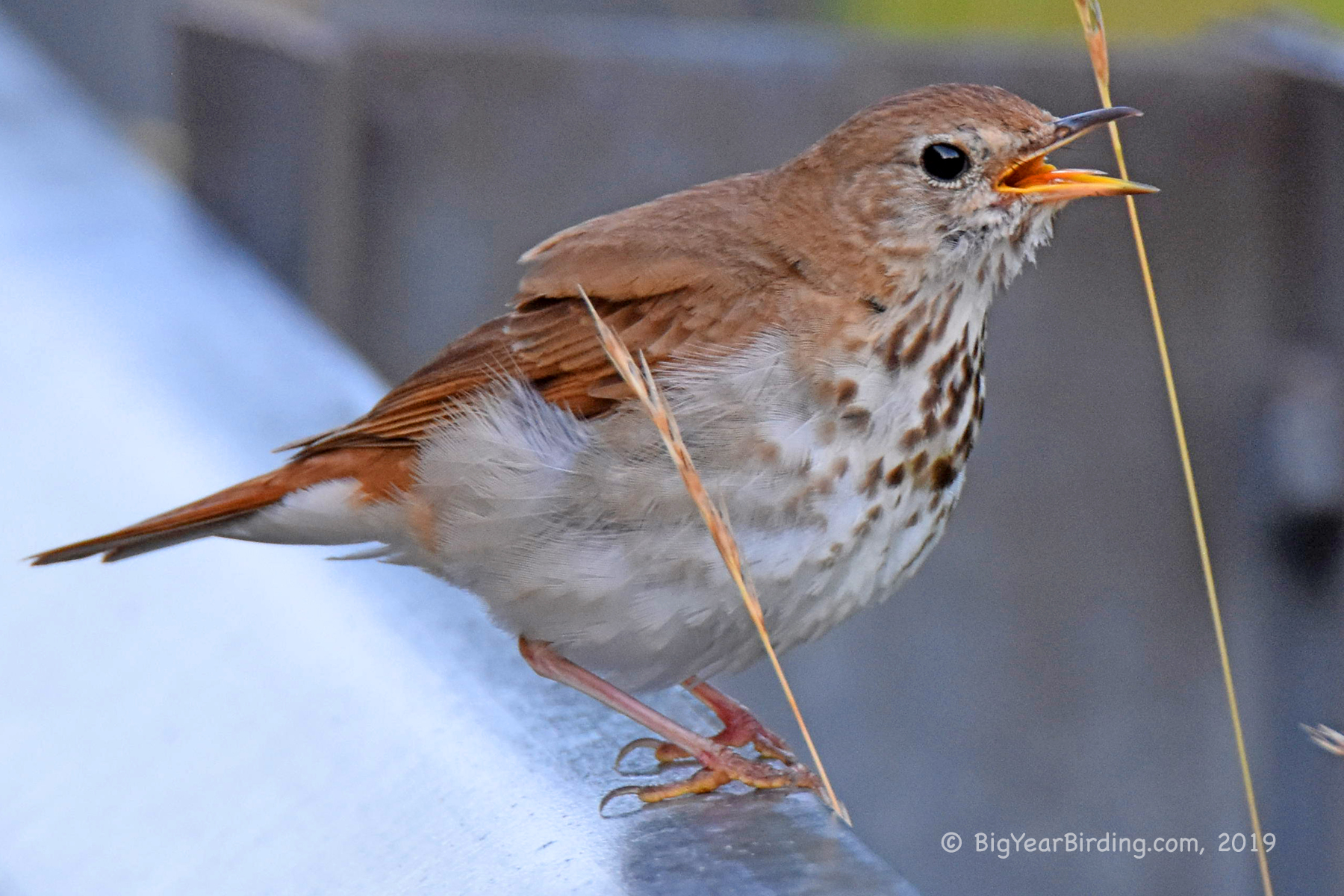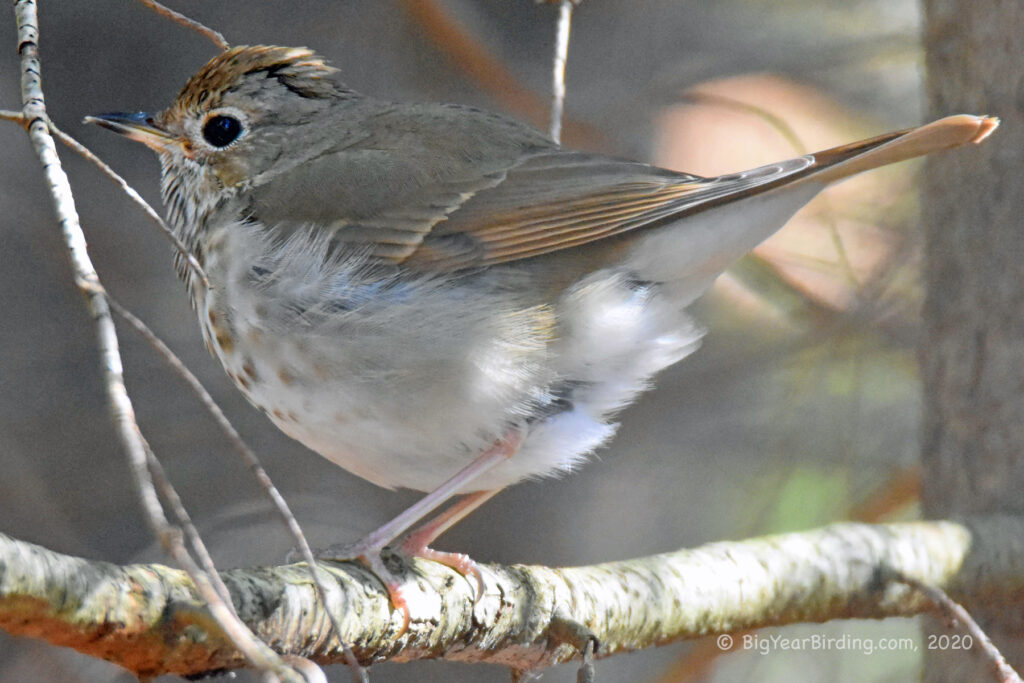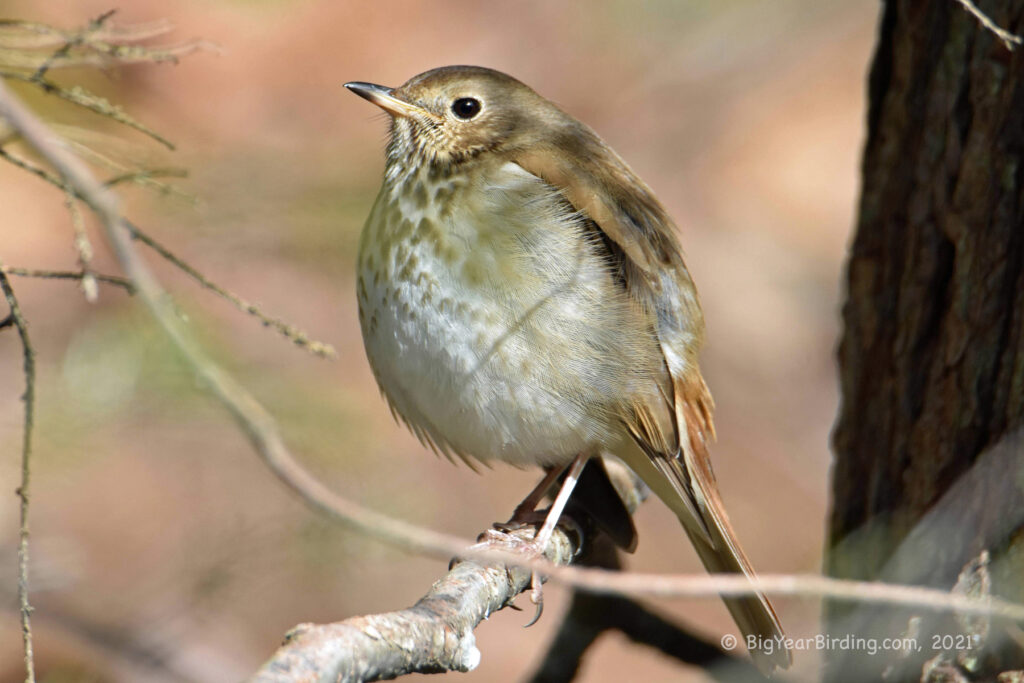
The Hermit Thrush is a small-sized songbird, measuring 6.5 to 7 inches in length and weighing 0.6 to 0.8 ounces. It has a reddish-brown upper body, with a contrasting gray head, and a buffy-white underbody with brown spots. Its wingspan ranges from 10.5 to 11.5 inches, with brownish wings and tail feathers that are slightly rufous.
The Hermit Thrush is easily distinguished from other thrushes by its reddish-brown tail, with each feather having a bold, contrasting black band near the tip. Its vocalizations also help with identification, consisting of a distinctive, clear, flute-like song and a sharp, high-pitched call note.
The Hermit Thrush is a medium-distance migrant, breeding in the boreal forests of North America, and wintering in the southern United States and Mexico. During migration, it can be found in a variety of habitats, including woodlands, parks, and gardens. It is a relatively early migrant, with most individuals passing through North America in September and October and returning to their breeding grounds in April and May.
The Hermit Thrush is not considered threatened or endangered, although its populations have declined in some areas due to habitat loss and fragmentation. Conservation efforts are focused on protecting its breeding and wintering habitats, reducing the impacts of climate change, and promoting sustainable forestry practices.

In addition to its importance in natural ecosystems, the Hermit Thrush is also valued for its role in the arts and culture. Its haunting, flute-like song has been praised by poets, musicians, and artists for its beauty and complexity, inspiring countless works of art and literature. Overall, the Hermit Thrush is a beloved and iconic bird, celebrated for its beauty, grace, and cultural significance.

